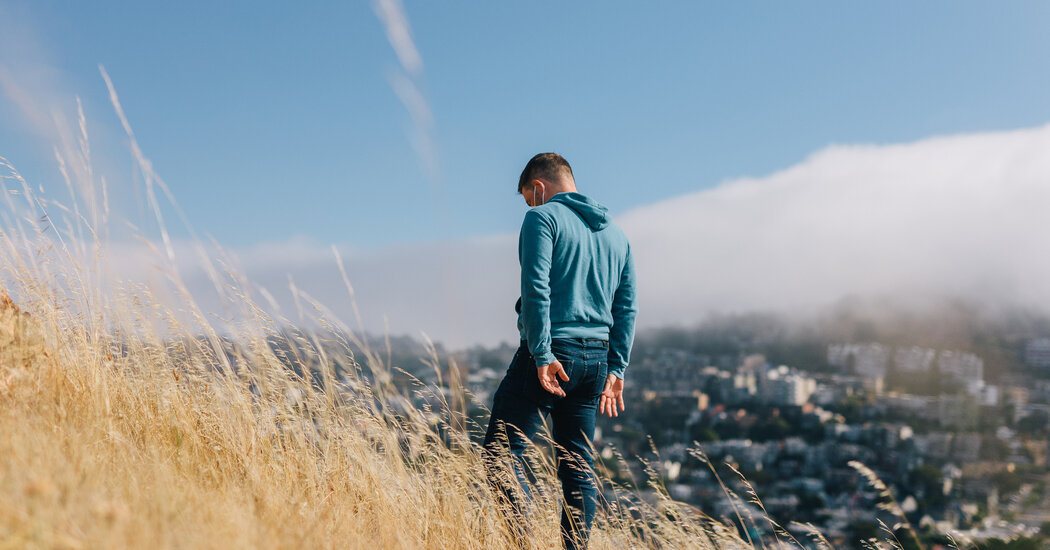

As epidemics go, the monkeypox outbreak should have been relatively easy to snuff out. The virus does not spread efficiently except through intimate contact, and tests and vaccines were at hand even before the current outbreak.
Yet the response in the United States has been sluggish and timid, reminiscent of the early days of the Covid pandemic, experts say, raising troubling questions about the nation’s preparedness for pandemic threats.
The first cases of monkeypox were reported in May, but tests will not be readily available until sometime this month. Vaccines will be in short supply for months longer. Surveillance is spotty, and official case counts are likely a gross underestimate.
There are already at least 700 cases in the United States, but experts say the real number is likely to be much higher. There probably will be many more infections before the outbreak can be controlled, if at this point it can be controlled at all.
“Why is it so hard for something that’s even a known pathogen?” asked Anne Rimoin, an epidemiologist at the University of California, Los Angeles, who first warned of monkeypox outbreaks more than a decade ago. “How many more times do we have to go through this?”
With increasing travel and trade, new pathogens will emerge more frequently, Dr. Rimoin said: “We’ve been hitting the snooze button on emerging diseases for decades. The alarm is going off, and it’s time to wake up.”
The obstacles to preparedness are systemic, at every level of government, rather than because of any one individual or agency, Dr. Rimoin and other experts said.
Even as the coronavirus pandemic drags into its third year, the public health system in the United States remains a hamstrung patchwork, an underfunded bureaucracy seemingly incapable of swift and forceful action. Its shortcomings have persisted for decades, through many administrations.
The United States estimated in 2010, for example, that in the event of a bioterrorist attack, 132 million doses of a vaccine for smallpox and monkeypox would be required for those who cannot safely take an older-generation vaccine with harsh side effects. Yet two months after the current outbreak began, the strategic national stockpile holds just 64,000 doses.
The situation “reveals the failure in the U.S. to take public health seriously,” said Zain Rizvi, who studies access to medicines at the advocacy group Public Citizen. “Do we ever run out of fighter jets?”
What to Know About the Monkeypox Virus
What is monkeypox? Monkeypox is a virus endemic in parts of Central and West Africa. It is similar to smallpox, but less severe. It was discovered in 1958, after outbreaks occurred in monkeys kept for research, according to the Centers for Disease Control and Prevention.
It’s often unclear which agency is ultimately responsible for a particular aspect of the response. The strategic national stockpile used to be under the purview of the Centers for Disease Control and Prevention, for example. The Trump administration handed it to a different agency, yet the C.D.C. still makes decisions about who should get the vaccine and when.
State and county-level health departments often set their own rules and priorities, sometimes at odds with federal guidance. “The machine is just so ossified,” said Gregg Gonsalves, an activist and epidemiologist at the Yale School of Public Health. The “house is on fire, and it’s like everything is moving at sort of normal speed.”
The global monkeypox toll has surpassed 8,100 cases, mostly men who have sex with men, and about as many potential cases are under investigation. Many of those patients cannot identify the source of their infections, suggesting that there is significant community transmission.
In the United States, the C.D.C. has found at least two versions of the virus, indicating at least two parallel chains of transmission.
“It’s pretty clear that we need to rapidly scale up the ability to diagnose this now,” said Jay Varma, director of the Cornell Center for Pandemic Prevention and Response.
The first missteps in the U.S. response to monkeypox were in testing. As in the early days of the coronavirus pandemic, samples from monkeypox patients are being funneled to the C.D.C. for final diagnosis, a process that can take days. Only recently have tests been shipped to commercial laboratories; one of them began offering testing on Wednesday.
A network of about 70 public health labs set up by the C.D.C. has the capacity to identify orthopoxviruses, the family that includes smallpox and monkeypox. But local doctors must first get clearance from a state epidemiologist, then somehow get the samples to one of the labs, the same process used in early 2020 to identify coronavirus infections.
Local health departments trace contacts only after a confirmed diagnosis, allowing the chain of transmission to continue in the meantime.
“We clearly identified this as a major mistake that allowed Covid to get its footprint in the U.S. and spread undetected for a month, without any of us knowing,” said Angela Rasmussen, a research scientist at the Vaccine and Infectious Disease Organization at the University of Saskatchewan in Canada.
“And now we’re just doing the same thing all over again, because that’s the way it’s done.”
The C.D.C. should have made testing rapidly available to glean the extent of the outbreak early on, she added: “Our failure to do that has almost certainly allowed the outbreak to become much bigger than it could have been, and now I have serious doubts about whether it can even be contained.”
In San Francisco, B, a 43-year-old medical writer who asked that his name be withheld for privacy reasons, found himself shivering uncontrollably with a high fever on June 14, eight days after he had multiple sexual encounters at a bathhouse in Chicago.
When a blister appeared on B’s wrist on Friday afternoon, he suspected monkeypox. But his health care provider said the city’s health department would not be able to pick up his sample till Tuesday, June 21, after the Juneteenth holiday.
No one reached out to him to ask about his contacts, or to offer vaccines to his roommate or partner. It was Friday, a week later, before the sample was picked up, and the following Wednesday — nearly two weeks after he had contacted his health care provider — before he was told he had tested positive for an orthopoxvirus.
By then, his lesions had healed, and he no longer needed to isolate. “The irony of this happening on the same day as receiving the first test result is not lost on me,” he said.
Even then, the health department told him it would likely be another week before the C.D.C. could confirm that he had monkeypox.
“Two blisters and a rash on my butt is not the worst I’ve had in my life,” B said. But given his experience, “I don’t think we’re prepared for another pandemic of something that’s actually serious.”
A senior Biden administration official, who spoke on condition of anonymity to discuss internal matters, acknowledged that implementation of monkeypox testing had not been as convenient nor fast as it needed to be.
Negotiations between government officials and commercial labs began in the third week of May, soon after the first cases were identified, he said. But it took time to settle contracts, scale up test supplies and train personnel to handle the virus.
Still, the official noted, the C.D.C. published test procedures in early June, and the F.D.A. authorized additional test supplies to allow any interested lab to participate. The wait time for test results has dropped from 15 days to nine days from the start of symptoms, and is expected to drop further as lab capacity expands in July, he said.
Another barrier to containing a disease like monkeypox is a dearth of sexual health clinics, as Dr. Varma noted in a recent opinion article in The New York Times.
Monkeypox was thought to present as a body-wide rash, but in the current outbreak, most patients have developed only a few pox, primarily in the genital area. Patients with genital symptoms are much more likely to seek care at sexual health clinics, because they tend to offer confidentiality, convenience and free or low-cost care.
But funding for these clinics has dropped by about 40 percent since 2003, after accounting for inflation. Partly as a result of the decline, about one in five Americans had a sexually transmitted infection in 2018, according to a C.D.C. report, and those numbers have surged during the pandemic.
If monkeypox can’t be contained, it may become a permanent threat, especially among men who have sex with men. “The fear is that this will become entrenched as an S.T.I., you know, just like, say, syphilis is, or H.I.V. for that matter,” Dr. Varma said.
“Without a lot of high quality sexual health services, you’re never going to be able to control it, because you won’t identify people fast enough,” he added.
The National Coalition of STD Directors has called for a minimum of $30 million to strengthen sexual health clinics during the outbreak. “We still have no federal coordinated plan, and states and cities are largely on their own,” said David Harvey, the organization’s director.
“I have one simple question for the administration: Where is the money, the resources, the training that is needed at the nation’s S.T.D. clinics to respond to what is already an out-of-control outbreak?”
Public health in the United States generally is woefully underfunded and understaffed, said Janet Hamilton, executive director of the Council of State and Territorial Epidemiologists.
Although Covid brought more money into public health coffers, those funds cannot be used for anything else. “We cannot function at the level I think that the public needs and expects us to if we’re going to always be so categorically funded,” she said. “We’re not learning this lesson for the first time.”
The experts did offer praise for one aspect of the administration’s response: the messaging to men who have sex with men, which hews to the “harm-reduction” approach, urging caution while recognizing people’s needs.
Rather than “stigmatizing them for wanting to have sex and enjoy themselves, you meet them where they are,” Dr. Varma said of the C.D.C.’s monkeypox messaging. “In terms of things that have gone well, that is among the best sort of harm reduction advice I’ve seen.”
